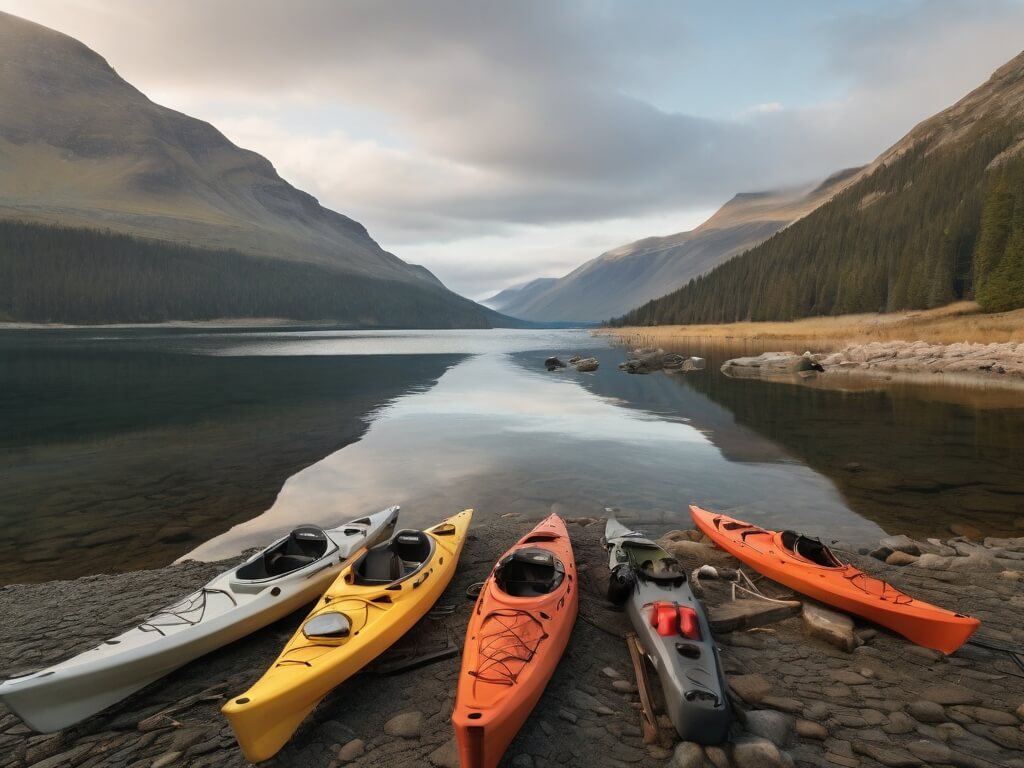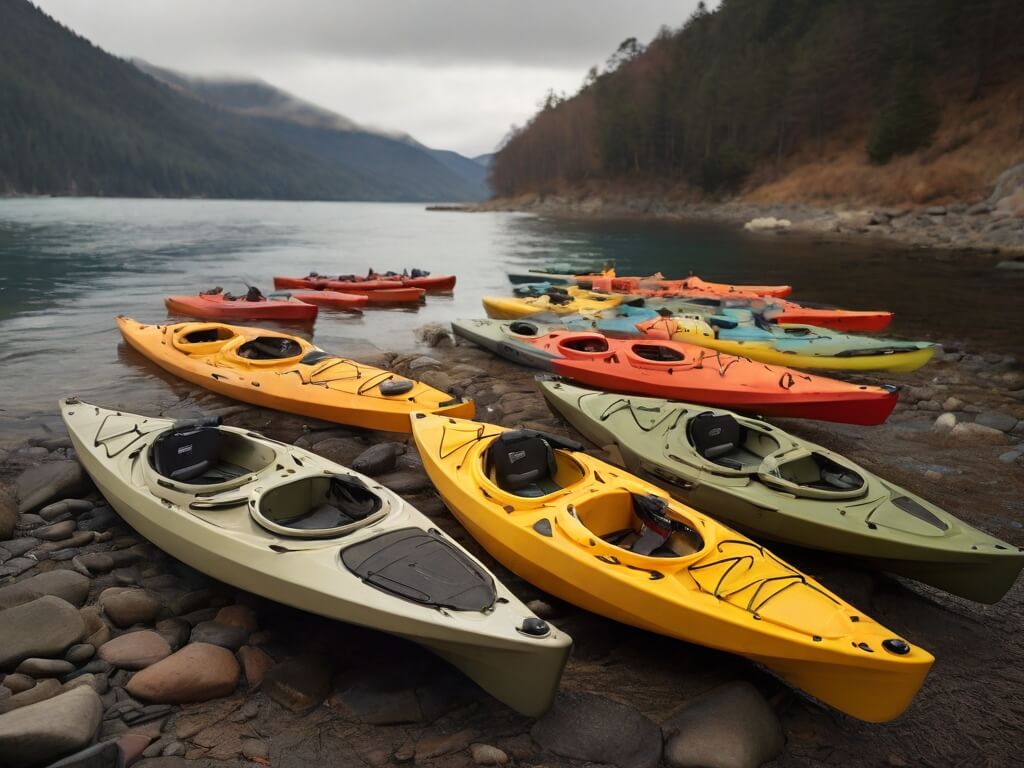What Is the Most Stable Kayak for Fishing?
Introduction
Embarking on a kayaking expedition for the sole purpose of fishing demands a meticulous consideration of various factors, with one paramount aspect taking center stage – stability. In the realm of angling, the stability of a fishing kayak serves as the linchpin, dictating the ease with which an angler can navigate, cast, and reel in their prized catch.
There are various factors to consider when choosing the right kayak. This comprehensive guide aims to unravel the intricacies surrounding the quest for the most stable kayak for fishing and deciding what is the most stable kayak for fishing, shedding light on the nuanced elements contributing to a kayak’s stability and exploring the myriad options available to anglers.

When it comes to fishing from a kayak, stability is paramount. Anglers need a reliable and secure platform to enjoy their fishing adventures. This article delves into the world of stable kayaks for fishing, exploring the key features, types, and considerations that anglers should keep in mind when choosing the most stable kayak for their needs.
Key Takeaways
- Hull Design Matters: Choose a hull design that aligns with your preferences, considering factors like initial stability and speed.
- Width and Weight Capacity: Wider kayaks and higher weight capacities generally contribute to better stability.
- Consider the Type: Sit-on-top, pedal-drive, and inflatable kayaks all have stable options catering to different preferences.
- Key Features for Stability: Look for features like multiple rod holders, ample storage, adjustable footrests, and a stable standing platform.
Setting Sail into the Stability Spectrum
As anglers cast their lines into the expansive waters, the stability of their chosen kayak becomes an intrinsic part of the fishing narrative. In the context of kayaks, stability transcends mere balance; it encompasses a dynamic interplay of design, dimensions, and features that collectively influence the kayak’s ability to resist tipping and provide a steadfast platform for angling pursuits.
Understanding Stability in Fishing Kayaks
Before diving into the specifics, it’s crucial to understand what makes a kayak stable for fishing. Stability in a fishing kayak is a measure of its ability to remain upright and resist tipping. This characteristic is influenced by hull design, width, and weight capacity.
Navigating the Mosaic of Hull Designs
The heart of kayak stability lies in the diversity of hull designs. Beyond the binary of stability versus speed, the nuances of flat-bottom hulls, pontoon-style configurations, and tunnel hulls weave a tapestry of choices for anglers. Each design brings a unique blend of initial stability, secondary stability, and maneuverability, offering anglers a spectrum of options to align with their preferences and fishing environments.
Hull Design Matters
- Flat Bottom Hulls: Kayaks with flat bottom hulls offer excellent initial stability, making them suitable for beginners and those who prioritize stability over speed.
- Pontoon-Style Hulls: Featuring multiple pontoons, these hulls provide exceptional stability, ensuring the kayak remains steady even in choppy waters.
- Tunnel Hulls: Combining elements of flat and pontoon-style hulls, tunnel hulls provide a balance between stability and speed.
The Dance of Dimensions: Width and Stability Ballet
Widening the lens of stability, the width of a fishing kayak emerges as a pivotal factor. In the symphony of dimensions, wider kayaks often promise superior stability, granting anglers a reassuring foundation. However, this overture of stability comes with its own set of considerations, as wider kayaks may sacrifice the nimbleness and speed that narrower counterparts might offer.
Width and Stability Guidelines
- Wide Kayaks: Generally, wider kayaks offer better stability. However, wider kayaks may sacrifice speed and maneuverability.
- Narrow Kayaks: While narrower kayaks may feel less stable initially, many experienced anglers appreciate their increased speed and agility.
Weight Capacity: The Silent Stabilizer
Adding depth to the stability narrative is the often understated hero–weight capacity. Beyond personal comfort, weight capacity directly influences a kayak’s stability on the water. Choosing a kayak with an adequate weight capacity ensures that the vessel remains resolute in the face of an angler’s gear, creating a harmonious equilibrium between payload and stability.
Weight Capacity Guidelines
A crucial factor in stability is the weight capacity of the kayak. Ensuring that the kayak can comfortably support the weight of the angler along with fishing gear is essential for stability and safety.
Types of Stable Fishing Kayaks: A Panorama of Stability
Venturing further into the landscape of stability, the types of fishing kayaks present a diverse panorama. Sit-on-top kayaks beckon with easy accessibility and a stable platform, while pedal-drive kayaks introduce a hands-free approach, contributing to overall stability during angling endeavors. Even inflatable kayaks, often underestimated in their stability, bring a portable option to the stability spectrum.
- Sit-on-Top Kayaks: These kayaks provide excellent stability and are easy to enter and exit, making them popular for fishing.
- Pedal-Drive Kayaks: Equipped with pedal systems, these kayaks allow hands-free operation, contributing to stability during fishing.
- Inflatable Kayaks: Despite their inflatable nature, many inflatable kayaks are designed with stability in mind, providing a portable option for anglers.

Key Features to Look for
Charting the Course for Stability: Key Features to Navigate By
For anglers seeking the zenith of stability, the journey is incomplete without considering key features. A multifaceted approach unveils the importance of dedicated rod holders, ensuring a seamless angling experience. Ample storage space emerges as a harbinger of organization and stability, with a designated spot for coolers contributing to the equilibrium. Adjustable footrests become the compass for personalized stability, allowing anglers to navigate comfortably and confidently.
- Multiple Fishing Rod Holders: A stable fishing kayak often comes with dedicated rod holders, allowing anglers to fish with multiple rods simultaneously.
- Ample Storage Space: Storage compartments for gear and a dedicated space for a cooler contribute to a more organized and stable fishing experience.
- Adjustable Footrests: Customizable footrests ensure that the angler can find the most comfortable and stable seating position.
- Stable Platform for Standing: For those who prefer standing while fishing, a kayak with a stable standing platform is essential.
Unveiling the Epitomes of Stability: Top Picks for the Discerning Angler
Amidst the vast sea of options, certain kayaks ascend as epitomes of stability. The Hobie Mirage Pro Angler 14, with its pontoon-style hull and pedal-drive system, beckons to those who seek an unwavering fishing platform. The Old Town Topwater 120 PDL, navigating the waters with a tunnel hull, strikes a delicate balance between stability and speed. Meanwhile, the Vibe Kayaks Sea Ghost 130, with its sit-on-top design and stable standing platform, beckons anglers to cast confidently.
In the pursuit of the most stable kayak for fishing, anglers embark on a journey marked by intricacies, choices, and the quest for equilibrium. As the chapters unfold, this guide aims to empower anglers with the knowledge to navigate the waters, casting their lines from a stable and secure platform, and reeling in the joy of fishing from a kayak designed for stability.
Top Picks for Stability
The Pinnacle of Stability
When it comes to stability, certain kayaks stand out from the rest. Here are a few top picks:
1. Hobie Mirage Pro Angler 14:
- Hull Type: Pontoon-style for maximum stability.
- Features: Pedal-drive system, multiple rod holders, and a spacious deck for standing.
2. Old Town Topwater 120 PDL:
- Hull Type: Tunnel hull for a balance of stability and speed.
- Features: Pedal-drive system, adjustable footrests, and ample storage space.
3. Vibe Kayaks Sea Ghost 130:
- Hull Type: Sit-on-top design for easy entry and exit.
- Features: Multiple rod holders, stable platform for standing, and a comfortable seat.
| Kayak Model | Hull Type | Features |
|---|---|---|
| Hobie Mirage Pro Angler 14 | Pontoon-style | Pedal-drive system, multiple rod holders, spacious deck |
| Old Town Topwater 120 PDL | Tunnel hull | Pedal-drive system, adjustable footrests, ample storage |
| Vibe Kayaks Sea Ghost 130 | Sit-on-top | Multiple rod holders, stable platform for standing, comfortable seat |

Key features, serving as constellations guiding this maritime voyage, emphasize the importance of dedicated rod holders, storage solutions, and adjustable footrests. These are not just amenities but integral elements shaping a stable and enjoyable fishing experience.
In the twilight of our exploration, the spotlight falls on top picks like the Hobie Mirage Pro Angler 14 and Vibe Kayaks Sea Ghost 130 – vessels that stand as testaments to the synergy between stability, design, and functionality.
In essence, this journey is not confined to the pages of a guide; it extends into the water, where anglers can now embark confidently, casting lines from a kayak that resonates with their unique needs. The pursuit of the most stable fishing kayak is not merely a quest; it’s an invitation to a fluid dance with the tides, where stability becomes the unwavering partner in every angling endeavor.
Stability, in this context, transforms from a mere characteristic to a dynamic force that influences an angler’s connection with the water. The panorama of kayak types, from the accessibility of sit-on-tops to the innovation of pedal-drive systems, showcases the diverse ways stability can manifest in vessels tailored to individual preferences.
Conclusion
In the pursuit of the most stable kayak for fishing, anglers have a variety of options to choose from. By understanding the impact of hull design, width, and weight capacity, along with exploring different types of fishing kayaks and their key features, individuals can make an informed decision that aligns with their fishing style and preferences.
The intricacies of hull design, width, and weight capacity have unfolded, providing anglers with a compass to navigate the vast sea of kayak options.

